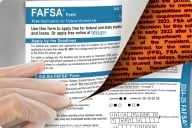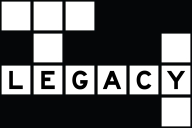You have /5 articles left.
Sign up for a free account or log in.
Hundreds of high schools across the country have expressed interest in ditching letter grades and grade point averages for the mastery transcript, an interactive display of students’ work that’s attractive to colleges looking for a well-rounded, nonnumerical evaluation of applicants.
The Mastery Transcript Consortium began its movement in 2017, with a list of 100 private high schools across the country agreeing to pilot letter-grade-less transcripts. As of July 2019, 278 U.S.-based and international member schools -- 20 percent of them public -- have signed on, and more than 15 schools will begin testing a prototype of the mastery transcript with students this coming school year. These pilot schools have all already been practicing mastery learning, said Mike Flanagan, the consortium’s chief product officer.
The consortium’s allies believe the mastery transcript will give admissions officers a more holistic view of students, as educators award them “foundational” (what’s expected for a diploma) or “advanced” credits for a specific subject matter, skill or character quality. Each of these areas is accompanied by a bite-size portfolio of evidence, like projects, employment or internship experience. The transcript would allow students to demonstrate more than just academic achievement, but softer, career-applicable skills like leadership and critical thinking.
“The only way we can capture [out-of-class experiences] right now is if students are fortunate enough to get a recommendation or in their essays,” Flanagan said. “We’re trying to make that barrier between what happens in the classroom and outside a bit more permeable.”
The consortium is allowing schools to determine how they use the transcript based on students’ individual needs, and some are selecting a limited number to use the mastery transcript at first, said Stacy Caldwell, the consortium’s CEO. One of the beta-testing public schools, Champlain Valley Union High School in Hinesburg, Vt., is simply allowing a small group of its 10th, 11th and 12th graders see what the mastery transcript would look like next to their standard list of grades and GPA. The school won’t be sending the mastery transcript to colleges just yet, said Emily Rinkema, a proficiency-based learning coordinator at the school and co-author of co-author of The Standards-Based Classroom: Make Learning the Goal.
“Some schools are saying, ‘We know this is right for all of our students,’ while others are doing it as a coalition of the willing,” Caldwell said. “It’s not a top-down mandate … It’s a student and parent decision guided by advisers at the school.”
One school launching the full pilot is Gibson Ek High School in Issaquah, Wash., a public Big Picture Learning school, which subscribes to a real world, project-based education experience, said Julia Bamba, Gibson Ek’s principal. When it first opened in 2016, Gibson Ek had already done away with traditional grading and teaching strategies, requiring students to attend internships two days a week at organizations in the community and to complete projects they are passionate about. Before joining the consortium, the school designed its own mastery transcript.
So it was a relief, Bamba said, and validation of the school’s nontraditional approach to grading, when college acceptances for Gibson Ek’s first graduating class rolled in late last year. The school has about 200 students total, and the Class of 2019 was the first to receive diplomas. (A criticism of the transcript project is that it would favor private schools serving wealthier students. Officials have said that the new transcript can work for all schools, and that they started with elites for their ability to draw colleges' attention.)
“It’s reassuring to [parents] that we’re part of a consortium that’s larger than just our district,” Bamba said. “We had been telling them for three years that their kids will get into college. To know that the work of our kids is recognized by universities and colleges and that they can see the incredible work the kids are doing is amazing.”
When Flanagan visited Gibson Ek in 2018, Bamba said she was excited to have an outside organization involved to provide a standardized mastery transcript that many other member schools across the country would also be using. It also wouldn’t require much of a transition for Gibson Ek, which had been evaluating students on transcripts by saying they are “approaching, met and exceeded” subject requirements.
Gibson Ek will be one of three to four member schools fully piloting the consortium’s mastery transcript prototype this year, with the entirety of its 2020 class. Around 20 students are also preparing to use it for early-admission applications, Bamba said.
The consortium will determine where pilot students are applying and communicate directly with those institutions about the mastery transcript format ahead of the start of early admissions, Caldwell said.
Higher Ed's Role
The consortium also launched a higher ed working group in the spring, which now has representatives from a mix of 12 private and public institutions, including the University of Florida, the University of Michigan and Swarthmore College. (Flagship universities and competitive privates dominate the group.)
While the mastery transcript looks ideal for some nontraditional high schools so far, some wonder whether college admissions offices will have a learning curve when reviewing them, Rinkema said. Some colleges may have to adjust their admissions personnel training to effectively review the transcripts.
“The traditional GPA and test scores is an easy indicator for [colleges] to compare our students,” Bamba said. “Students from schools such as ours are going through a different screening process than others.”
If admissions officers aren’t trained on how to evaluate the mastery transcript, students who use it could actually be disadvantaged, Rinkema said. So far, Champlain Valley has kept their transcripts fairly standard so its students aren’t lost in technicalities during the application review process, she said.
“It’s tough -- some colleges say that they look at all different types of transcripts, so already, they see a huge variety of transcripts from traditional to nontraditional,” Rinkema said.
But she recalled a conversation with one head of admissions at a college who said most college admissions officers are young and temporary workers with little training, tasked to review transcripts with speed. It’s a risk for traditional high schools to change their ways, but they would assuredly follow the lead of institutions if they decided to overhaul their own admissions, Rinkema said.
“If [the Mastery Transcript Consortium] gets this right, it could change everything for schools,” she said. “We wouldn’t have to play by the old rules anymore. We could communicate what students can do in a much more accurate way.”
For the many institutions already evaluating students holistically -- or attempting to -- the mastery transcript makes the process more effective, said Zina Evans, vice president for enrollment management and associate provost at the University of Florida and a member of the consortium’s higher ed working group.
“I don’t think that it would be that big of a climb, because when you look at admissions from a holistic perspective, you’re much more interested not in the GPA or the grade, but how [the student] got there,” Evans said. “The mastery transcript would help us answer that question of how they got there. The GPA or the grade is the end of the story.”
The reinvented transcript could even produce more diversity and equity in the admissions process, Flanagan said, making it easier for colleges to admit more standout nontraditional students with an array of personal and educational experiences.
“This is a transcript that can serve every student from every type of school -- whether your school is massively resourced or struggling, it’s equipped for every type of school,” Flanagan said. “A lot of the folks in the higher ed [working group] are currently tasked with finding kids who aren’t on their radar. It’s going to be very hard to find them if we keep using the same indicators that are largely based on household income.”







